If flat car is given an acceleration a0=2m/s2 staring from rest, computer corresponding tension in the light inextensible string connected to block of mass 50 kg. Neglect mass of pulley and its friction. Coefficient of friction between block and flat car is μ=0.30.
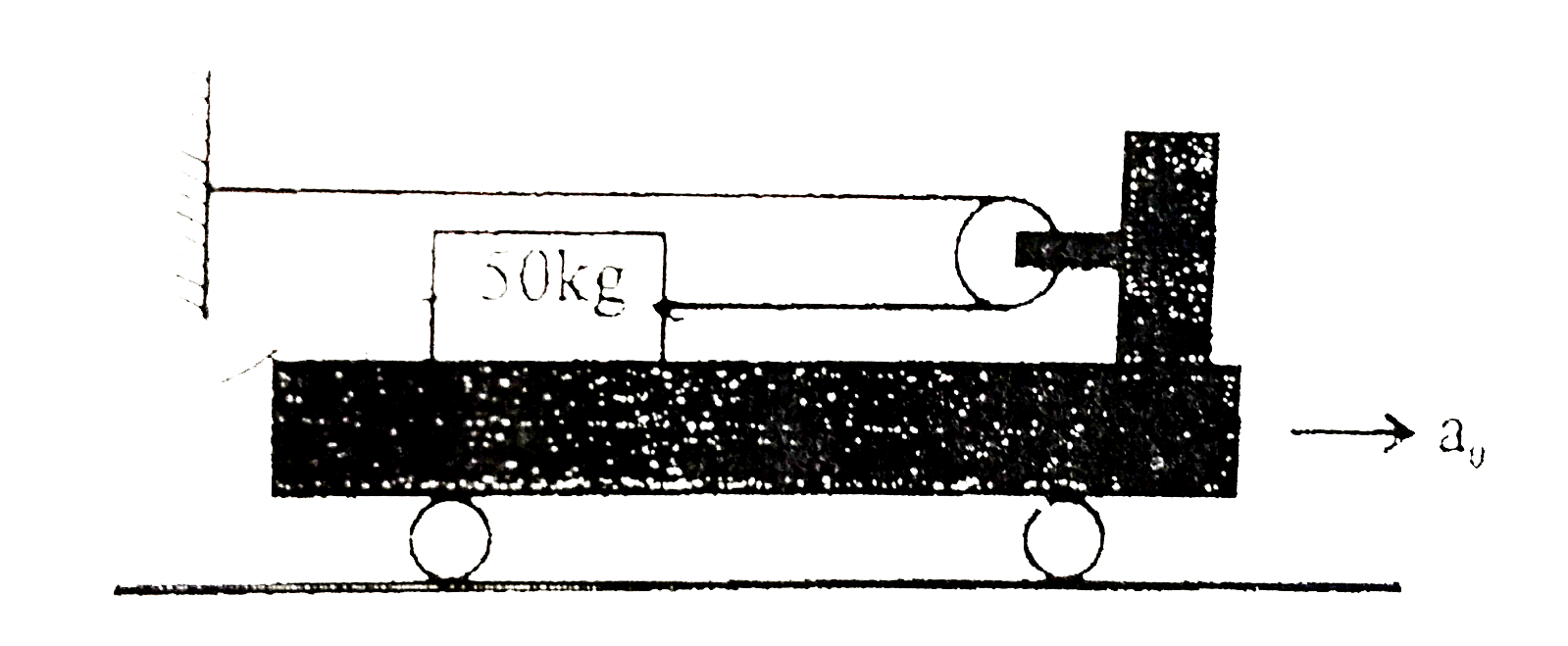
100N
250N
300N
350N
The correct Answer is:D
L=y+y−x=2y−x

Differntiation of above, gives
2d2ydt2−d2xdt2=0 ⇒aB=2a0
T−f=maB
T=μmg+m×2a0
=0.3×50×10+50×2×2=350N
Topper's Solved these Questions
- BOOK - BANSALCHAPTER - TEST PAPERSEXERCISE - PHYSICS PART B3videos
TEST PAPERS
- BOOK - BANSALCHAPTER - TEST PAPERSEXERCISE - PHYSICA PART A12videos
TEST PAPERS
- BOOK - BANSALCHAPTER - TEST PAPERSEXERCISE - PHYSICS PART (C )15videos
TEST PAPERS
- BOOK - BANSALCHAPTER - SEMICONDUCTORSEXERCISE - CBSE Question32videos
SEMICONDUCTORS
Similar Questions
Determine the acceleration of the 5kg block A . Neglect the mass of the pulley and cords . The block B has a mass of 10kg, The coefficient of kinetic friction between block B and the surface is μk=0.1 (take g=10m/s2)
 View Solution
View SolutionIf the tension in the string in the figure. Is N and the acceleration of each block is 0.5ms2, find the friction coefficients at the two contacts with h blocks.
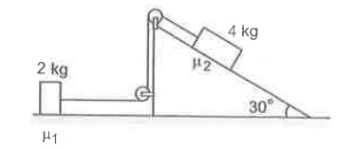 View Solution
View Solution
Knowledge Check
- Question 1 - Select One
A flat car is given an acceleration a0=2m/s2 starting from rest. A cable is connected to a crate of weight 50kg as shown whose other end is attached to a fixed support on ground. Neglect friction between the floor and the car wheels and also the mass of the pulley. Calcuollate corresponding tension in th cable if μ=0.30 between the crate and the floor or the car.
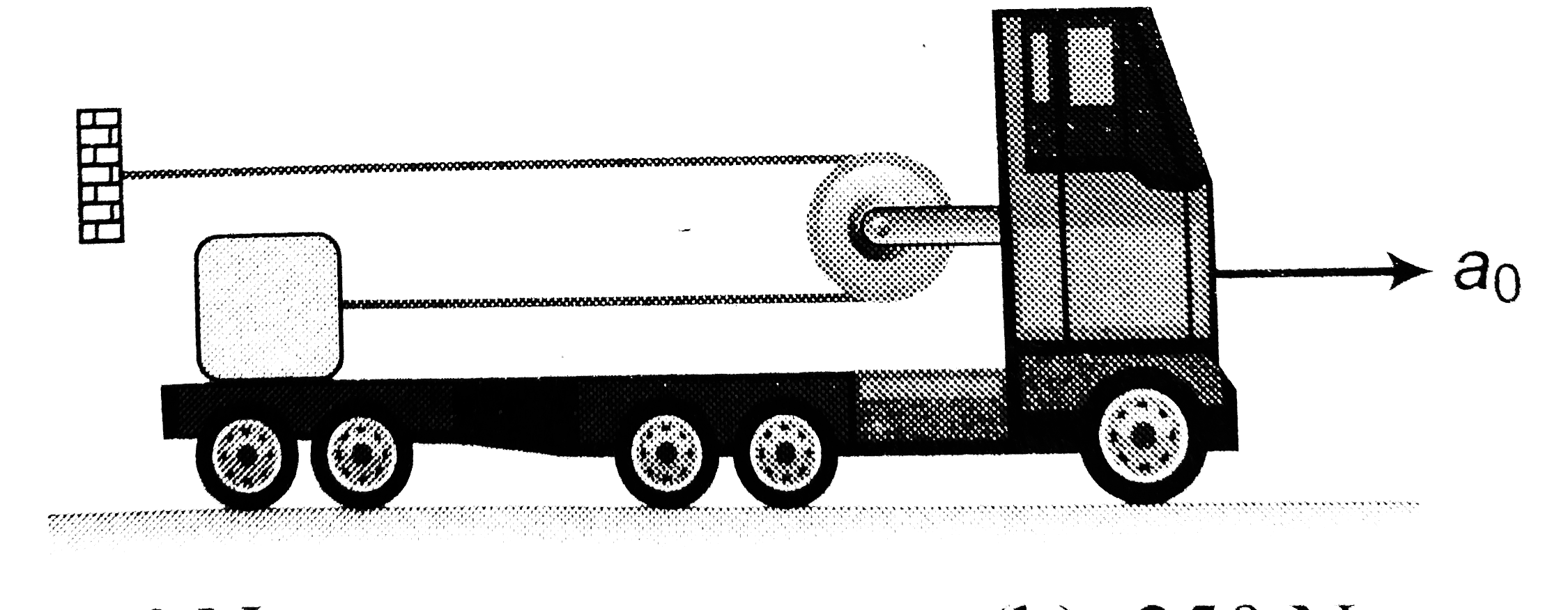 A350NB250NC300NDnone of these
A350NB250NC300NDnone of these - Question 2 - Select One
Two blocks of masses m1 and m2 are connected through a massless inextensible string .A block of mass m1 is placed at the fixed rigid inclined surface while the block of mass m2 hanging at the other end of the string which is passing through a fixed massless frictionless pulley shown in figure The coefficient of static friction between the block and the inclined plane is 0.8 The system of masses m1 and m2 released from rest
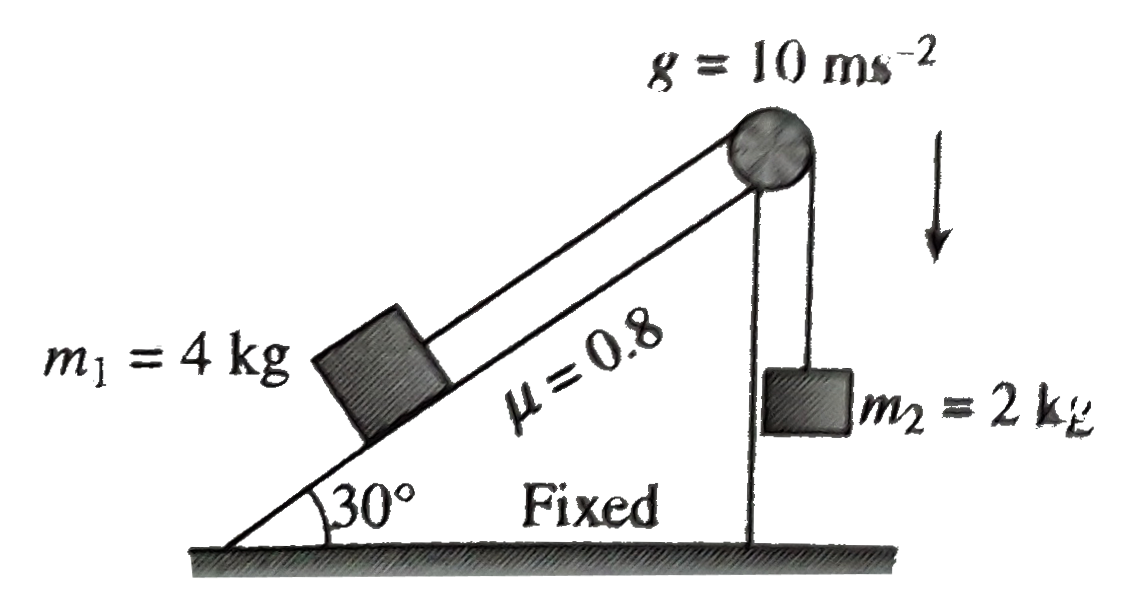 AThe tension in the string is 20N after releasing the systemBThe contact force by the inclined surface on the block in along normal to the inclined surfaceCThe magnitude of contact force by the inclined surface on the m1 is 20√3NDNone of these
AThe tension in the string is 20N after releasing the systemBThe contact force by the inclined surface on the block in along normal to the inclined surfaceCThe magnitude of contact force by the inclined surface on the m1 is 20√3NDNone of these - Question 3 - Select One
A block of mass 100kg is kept on a horizontal rough surface. A man of mass 60kg is trying to pull the block with the help of ideal inextensible string. Find the minimum tension ( approximately ) in string to pull the block so that man remains at rest . Coefficient of friction between block and horizontal surface is 0.2 and that between man an horizontal surface is 0.5 ( g =10m/s2 )
A100NB166NC180ND196N
Find the acceleration of the block of mass M in the situation of figure. The coefficient of friction between the two blocks is μ1 and that between the bigger block and the ground is μ2.
View SolutionBlock A of mass m and block B of mass 2m are placed on a fixed triangular wedge by means of a light and inextensible string and a frictionless pulley as shown in fig . The wedge is inclined at 45∘ to the horizontal on both sides . The coefficient of friction between the block Aand the wedge is 2/3 and that between the block B and the wedge is 1/3 .If the system of AandB is released from rest then find .
a. the acceleration of A
b. tension in the string
c.the magnitude and direction of the frictional force acting on A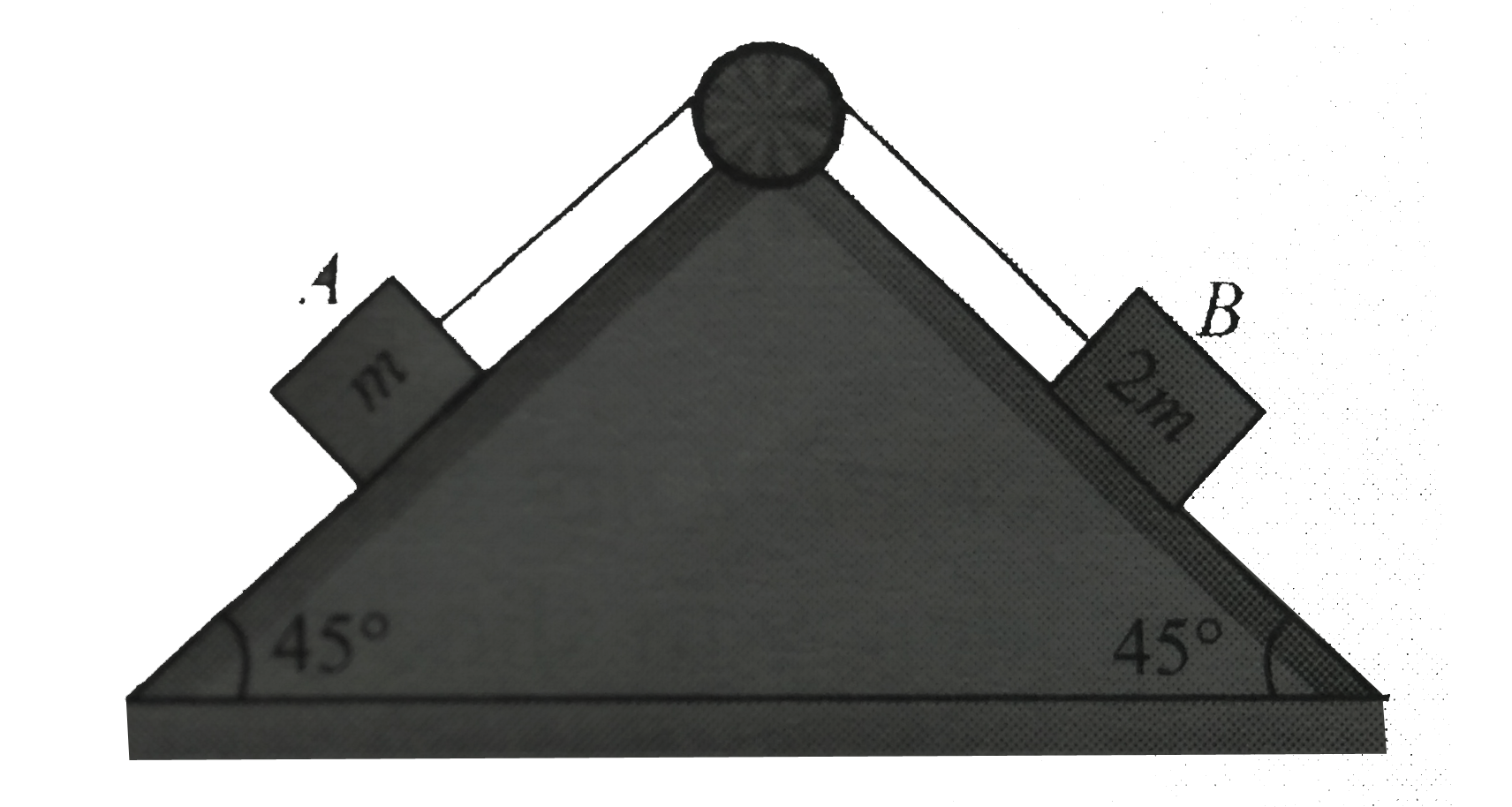 View Solution
View SolutionA block of mass m = 2kg is accelerating by a force F = 20N applied on a smooth light pulley as shown in the figure. If the coefficient of kinetic friction between the block and the surface is μ=0.3, find its acceleration.
 View Solution
View SolutionBlock B of mass mB=0.5kg rests on block A, with mass mA=1.5kg which in turn is on a horizontal tabletop (as shown in figure) .The coefficient of kinetic friction between block A and the tabletop is μk=0.4 and the coefficient of static friction between block A and blockB is μs=0.6 A light string attached block A passes over a frictionless, massless pulley and block C is suspended from the other end of the string. What is the largest mass mc (in kg) that block C can have so that block A and B still slide together when the system is replaced from rest?
 View Solution
View SolutionA block A of mass m1 rests on a horizontal table. A light string connected to it passes over a frictionless pully at the edge of the table and from its other end another block B of mass m2 is suspended. The coefficient of kinetic friction between the block and the table is H. When the block A is sliding on the table, the tension in the string is
View Solution

